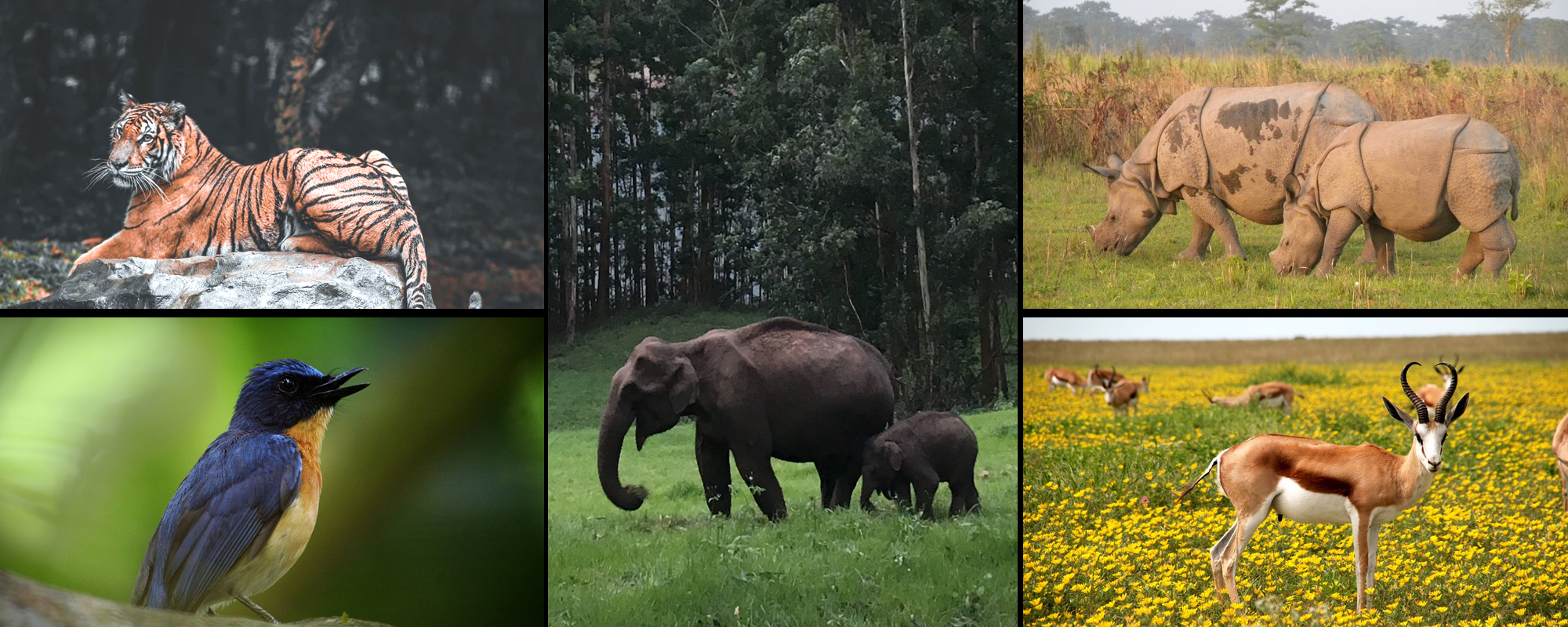
Just a 100km ride from Bhuj in Gujarat, you will come across Kutch Desert Wildlife Sanctuary which is one of the largest periodical saline swamplands in the world with a water depth of 0.5m to 1.5m. Informally recognized as the ‘Flamingo City’, the Kutch Desert Wildlife Sanctuary is a massive expanse of an area covering about 7505.22square kilometers making it the largest Wildlife sanctuary of India area wise. Nestled in the vicinity of the submerged 5000-year-old Harappan civilization of Dholavira in Gujarat, the Kutch Desert Wildlife Sanctuary also fascinates its visitors with some fossils and ancient remains.
The wildlife sanctuary was established in February 1986 and attracts visitors from all over the world with its unique and exquisite stretch of white and glimmering sand. After the month of October-November, the water dries and the entire place becomes a saline desert where thousands of Flamingoes nest and breed. The sanctuary is enhanced by four hilly and rocky islands which are Pachchham, Khadir, Bela, and Chorar along with KaloBungar and GoroDungar hills. The wildlife sanctuary was mainly established to preserve and protect the nesting grounds of hundreds of Flamingoes that breed here, particularly during the year at the optimum level of a blizzard.
The sanctuary is also home to a wide and diverse range of exotic wildlife along with some rare and beautiful birds. The northern boundary of the sanctuary is a part of the Indo-Pak border and is heavily protected and patrolled by the Border Security Force of India. The wildlife sanctuary is quite close to the civilians and residential areas, visitors are allowed inside the sanctuary only after special permission from the BSF. A visit to this wildlife sanctuary is a complete picture of the wildlife in Gujarat showcasing a horde of wild species in the form of animals and birds along with a unique and exquisite rendition of mother nature. This excursion makes the tour to Kutch in Gujarat near to perfection.
The hilly islands of the sanctuary comprise grassland, scrubland, barren wasteland, agriculture land, village ponds, irrigation reservoir, etc., which also provide support to the fauna of the place. Other flora includes scrubs like Prosopis,chilensis, Kahri Jar, Mithi Jar, Gugal, Thor, lai, Khijado, Gorad, HermoBaval, Kerdo, Bokhano, etc.
Mammals: Chinkara, Fox, Hyena, Nilgai, Wild Ass, Black Buck, Wolves.
Birds: Greater Flamingo, Lesser Flamingo, Great Indian Bustard, Spoonbill, White Pelican, Pintail, White-backed Vulture, Black Vultures, Black-necked Storks, Cormorant, Indian Cormorant, Brahmini Duck, Shoveller, Pochard, Sandpiper, Gulls, Terns, Stints, Painted Sand Grouse, Raptor, etc.
This is one of the hottest areas of India with an average summer temperature of 49.5 degrees Celsius while the winter temperature reduces drastically and drop to 0 degrees Celsius at night.
The best time to visit the Kutch Desert Wildlife Sanctuary is from November to February because the weather is pleasant during the day and Greater flamingoes can be spotted at abundance. During the full moon night, the place turns into an absolute paradise and the white stretches of landscape fills the eyes wit delight.
Nearest Train Station: The closest railhead is in Bhuj at 110km from the sanctuary which is well-connected by road network and private and public vehicles are available from the station.
Nearest Airport: The nearest airport is in Bhuj at a distance of 110km from the wildlife sanctuary. Taxis and buses are available from the airport to take you to the sanctuary.
Road Accessibility : The nearest bus station is Rapar at 20km away. Bhuj is well-connected by a road network from all the major cities and places in Gujarat and from the neighboring cities as well.
Copyright 2012-2022 Indiamap Digital Pvt Ltd. All rights reserved. Privacy Policy | Terms of Use